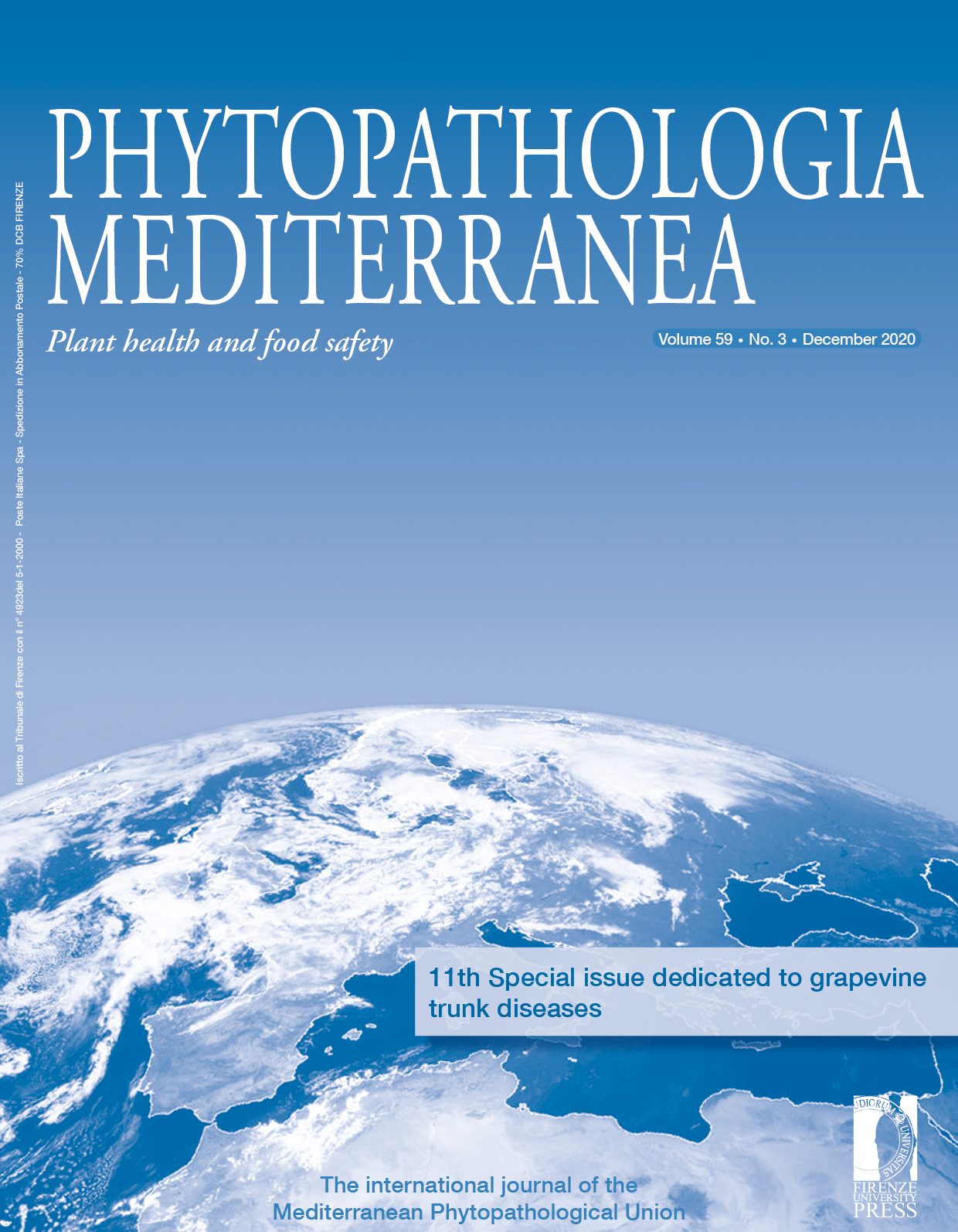Spore dispersal of Eutypella species under desert grape-growing conditions of southern California
Published 2020-08-15
Keywords
- Canker,
- Diatrypaceae,
- epidemiology,
- Eutypa,
- Eutypella
- grapevine trunk diseases,
- spore trap,
- Vitis vinifera ...More
How to Cite
Abstract
The seasonal abundance of Diatrypaceae spores was studied in southern California’s desert table grape-growing region of Coachella Valley. Glass microscope slides covered with petroleum jelly were placed in a mature cv. Mid-Night Beauty® vineyard, and collected weekly from September 2006 to May 2009 (1400 samples for 140 consecutive weeks). Overall, Diatrypaceae-like colonies were recorded from Petri plates after processing spore traps in 93 (66%) of 140 weeks. Phylogenetic analyses showed Eutypella citricola and Eutypella microtheca to be the Diatrypaceae spp. captured from the spore traps. Though spores were captured throughout each year, their incidence varied among the different seasons. The greatest number of Eutypella spores were captured in autumn (38.7% of the total) followed by winter (30.6%), summer (19.7%), and spring (11%). The greatest numbers of spores were captured in October each year (15.7%) and least in June (1%). Eutypella spore release was correlated with rainfall only in 26 (28%) of the 93 weeks that spores were captured during the study. Analysis of diseased samples collected from the cv. Mid-Night Beauty® vineyard showed that E. citricola, E. microtheca and E. scoparia were the most prevalent fungi isolated from cankers. A pathogenicity study showed that E. citricola and E. microtheca isolates collected from spore traps caused larger vascular necrosis than the non-inoculated controls, indicating their role as pathogens on grapevines. This study has demonstrated Eutypella spp. to play an important role in grapevine health under desert growing conditions of southern California. In addition, and contrary to what it is largely accepted, results from this research suggest that Diatrypaceae spore release can occur in the absence of precipitation. This study expands current knowledge on epidemiology of Diatrypaceae spp. other than Eutypa lata, and provides important information for enhancing control strategies against grapevine trunk diseases under desert growing conditions.






